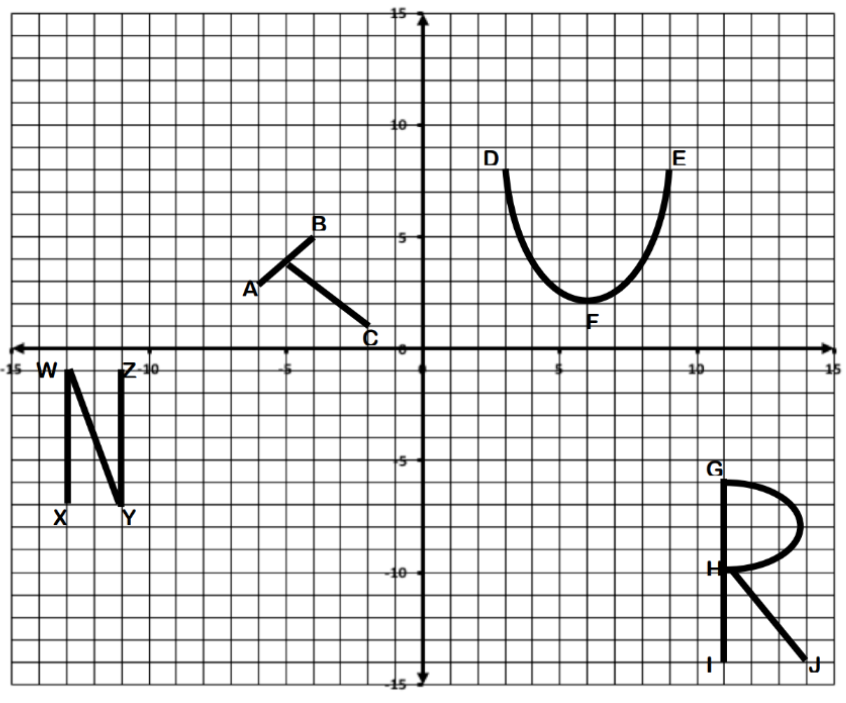Understand congruence and similarity using geometry software
The core elements of performance required by this task are:
Geometry 8.G
Understand congruence and similarity using physical models, transparencies, or geometry software.
1. Verify experimentally the properties of rotations, reflections, and translations.
a. Lines are taken to lines, and line segments to line segments of the same length.
b. Angles are taken to angles of the same measure.
c. Parallel lines are taken to parallel lines.
2. Understand that a two-dimensional figure is congruent to another if the second can be obtained from the first by a sequence of rotations, reflections, and translations; given two congruent figures, describe a sequence that exhibits the congruence between them.
3. Describe the effect of dilations, translations, rotations, and reflections on two-dimensional figures using coordinates.
Crosby has drawn the letters T, U, R, N on the coordinate plane below and labeled points on each of the figures with other letters

Write the coordinate pair for each point labeled on the letter T on the graph. A: B: C:
Crosby reflects the letter N across the x-axis. Draw the new image after the reflection on the coordinate axis below.
List the coordinates of the four endpoints of the new image of the N after the reflection. W': X': Y': Z':
Crosby rotates the letter T, 180 degrees about the origin.
Draw the rotated image on the coordinate axis and label the corresponding points with A', B', and C'.
Crosby wants to duplicate that same transformation of starting with the original T and covering the new image you drew, but his time he uses reflections. Explain the transformations he must use.
Crosby wants to use a series of reflections to move the letter R around the coordinate plane.
How many reflections would he need to make to end up covering the original pre-image of the R? Explain how you know.
Crosby thinks he can always duplicate any rotation of a pre-image to image by also using a single reflection of the two figures.
Do you agree or disagree with Crosby? Use mathematics to explain your answer.